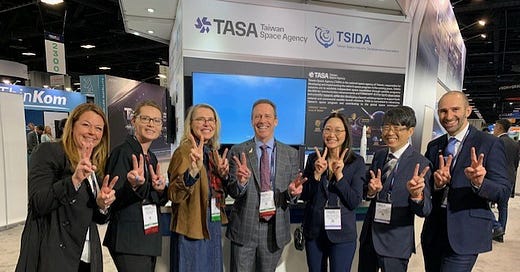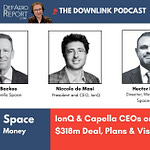What’s in this episode
This episode, coming from the Satellite 2024 conference in Washington, D.C., pulls on a number of threads to peer into the relationship between risk and risk taking, the perception of failure versus success, and whether SpaceX is flipping the script on those organizations we’d reactively point to as being the leaders.
Until recently, if you were asked “Who is leading in space?”, you might have answered NASA or the Chinese Aerospace Science and Technology Corporation, or CASC. After all, both of these state-owned organizations are doing hard cutting-edge space science and exploration. Plus we have Space Race 2.0 with the United States and China, and their groupings of allies, vying for the resources on the moon and asteroids.
What about a commercial entity? Specifically SpaceX. This company live-streamed its latest Starship-Super Heavy launch system, enticing viewers around the world to experience the excitement of this third orbital flight test and the explosions, what the company calls “rapid unscheduled disassemblies” or RUDs.
The event provided viewers an opportunity to vicariously embrace risk, accept incendiary iterative testing, and adopt as their own SpaceX’s goal of sending humans, not just to the Moon, but to Mars. Few criticized the fact that neither the rocket nor the spaceship returned to the earth’s surface intact, while the majority celebrated the incremental advancements that the test flight produced.
The intensity of SpaceX’s effort to proactively promote risk-for-greater and faster reward hasn’t been seen from a national space agency since the Apollo Program and Space Race 1.0.
There are good reasons for risk avoidance. NASA weathered two major setbacks after the 1996 Challenger Shuttle and 2003 Columbia Shuttle disasters, wherein the crews met a fiery end, in front of television audiences. Plus, national space agencies rely on public funds and have a duty to spend those monies carefully.
Nevertheless, SpaceX’s very public rapid iterative process is inspiring to many in the commercial sector, and the captivating video coverage it produces stands in stark contrast to most national space agencies.

Who’s in this episode






Namrata Goswami, an independent scholar on space policy and great power politics and co-author of the book “Scramble for the Skies The Great Power Competition to Control the Resources of Outer Space”
Frank Backes, CEO, Capella Space
Martin Cullen, Senior Manager for Business Development and Strategy, TE Connectivity
Siamak Hesar and Araz Feyzi, Co-Founders, Kayhan Space
Matthew Randall, Director of Business Development, Empulsion Inc.
And for your viewing pleasure…
I was a guest contributor to the latest episode of Liftoff!, which is a production of Foundation for the Future. I was joined by Peter Garretson, Senior Fellow in Defense Studies with the American Foreign Policy Council and co-director of its Space Policy Initiative and host of the Space Strategy Podcast, and Ed Tate, Co-Founder and CTO, Virtus Solis Technologies, a U.S. Space Based Solar Power company.
Our segment, starting at about 23:00, is a primer on Space Based Solar Power, complete with graphics.
That’s it for this week.
Ad Astra!
Laura














